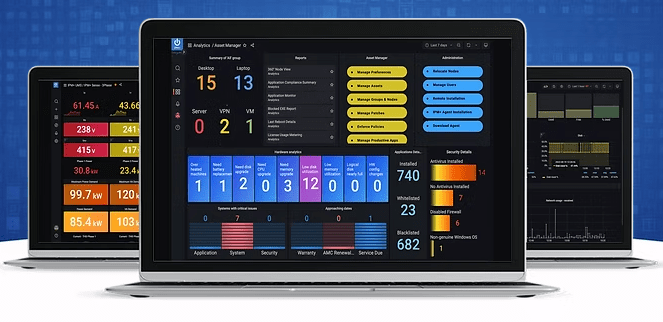
In a world rapidly moving toward digitization, sustainability is no longer just a buzzword—it’s a necessity. As Indian enterprises surge into the digital age, the question is no longer “Should we digitize?” but rather “How can we do it responsibly?”
Sustainable or green software development is an emerging concept in India, and it’s quickly gaining relevance among businesses that are aware of their carbon footprints, energy consumption, and long-term impact on the environment. But what does green software actually mean? How can emerging Indian enterprises adopt these practices without sacrificing growth and performance?
This blog explores the meaning, importance, and practical steps toward sustainable software, with a special focus on how companies in India—especially fast-growing startups and mid-sized firms—can lead the charge.
Green software refers to designing, developing, and maintaining software in a way that minimizes its environmental impact. This includes reducing energy consumption, optimizing resource usage, and minimizing waste across all stages of the software lifecycle.
In simpler terms, it’s about building software that’s:
For example, a mobile app that’s lighter, consumes less battery, and reduces server calls is considered “greener” than one that performs the same function inefficiently.
India is witnessing exponential growth in internet usage, cloud computing, and app development. According to Statista, India had over 880 million internet users by 2024, and the number is still rising. Each of those users interacts with software systems—often powered by massive data centers consuming large amounts of energy.
For emerging Indian enterprises, especially in metro cities like Delhi, Bangalore, and Mumbai, sustainable development offers:
Now let’s move from theory to action. Here’s how Indian businesses—especially tech startups and SMEs—can incorporate sustainability into their software development practices:
Some programming languages inherently consume more resources than others. For example, compiled languages like C or Go are often more efficient than interpreted ones like Python or Ruby. While this doesn’t mean you should ditch Python, it’s worth analyzing performance-critical components and rewriting them in more efficient languages.
Also, consider frameworks with lower memory usage and faster execution speeds—especially for backend systems or high-load applications.
Inefficient code is not just slow—it’s also wasteful. Some best practices include:
These optimizations not only reduce energy usage but also improve app responsiveness—a win-win.
Many emerging Indian enterprises rely on cloud platforms like AWS, Google Cloud, or Azure. Opting for data centers powered by renewable energy or using regional zones that are carbon-aware can make a significant difference.
Additionally, auto-scaling services to match demand (instead of running 24/7 servers) can reduce energy consumption drastically.
Frequent rebuilds or rewrites of poorly designed software add to resource waste. Designing software with modularity and scalability helps extend its life.
A long-lasting codebase is inherently greener.
The greener the front-end, the better the user experience—and the environment. Heavy apps that drain phone batteries or load unnecessary media increase energy usage on the user’s end.
Instead:
What gets measured, gets improved. Use tools like:
These tools give actionable insights on where your system stands and what can be improved.
Developers, product managers, and business leaders must collaborate to embed sustainability into their development culture. Conduct green coding workshops, update coding guidelines to reflect eco-goals, and reward optimization efforts.
Every kilobyte saved, every server spun down, and every second shaved off execution time adds up to a lower environmental impact. A Real Need in Indian Tech Hubs
As the tech industry booms in places like Delhi NCR, there’s increasing pressure to ensure this growth is responsible. Green software is no longer just an IT problem—it’s a boardroom discussion.
That’s why businesses are increasingly turning to experts to guide this transformation. Choosing the right development partner becomes crucial.
The Best Software Development Company in Delhi won’t just offer coding expertise—they will understand how to align your product vision with modern sustainability practices. This means crafting systems that not only scale but do so responsibly, affordably, and with purpose.
Such a partner will take a holistic approach—right from choosing eco-friendly platforms to ensuring backend optimization, helping you balance environmental and business goals.
What makes green software so powerful is its compounding effect. A small change—say, reducing server load by 20%—not only cuts down electricity but can:
In essence, building green is not just about sustainability—it’s about smart growth.
And as Indian enterprises look ahead, there’s a clear message: Software can either contribute to the climate crisis—or help solve it.
Sustainability is more than a corporate checkbox—it’s a commitment. And as technology continues to shape the future of Indian enterprises, it’s vital that we use our innovations responsibly.
Whether you’re launching a fintech app, running an e-commerce platform, or modernizing your ERP system—there’s always room to go greener. And with the right mindset, tools, and partners, it’s easier than ever.
If you’re a forward-thinking business looking to make an impact—not just in the market, but on the planet—consider working with the Best Software Development Company in Delhi that shares your vision of responsible innovation.
Let’s build software that doesn’t just move fast—but moves consciously.